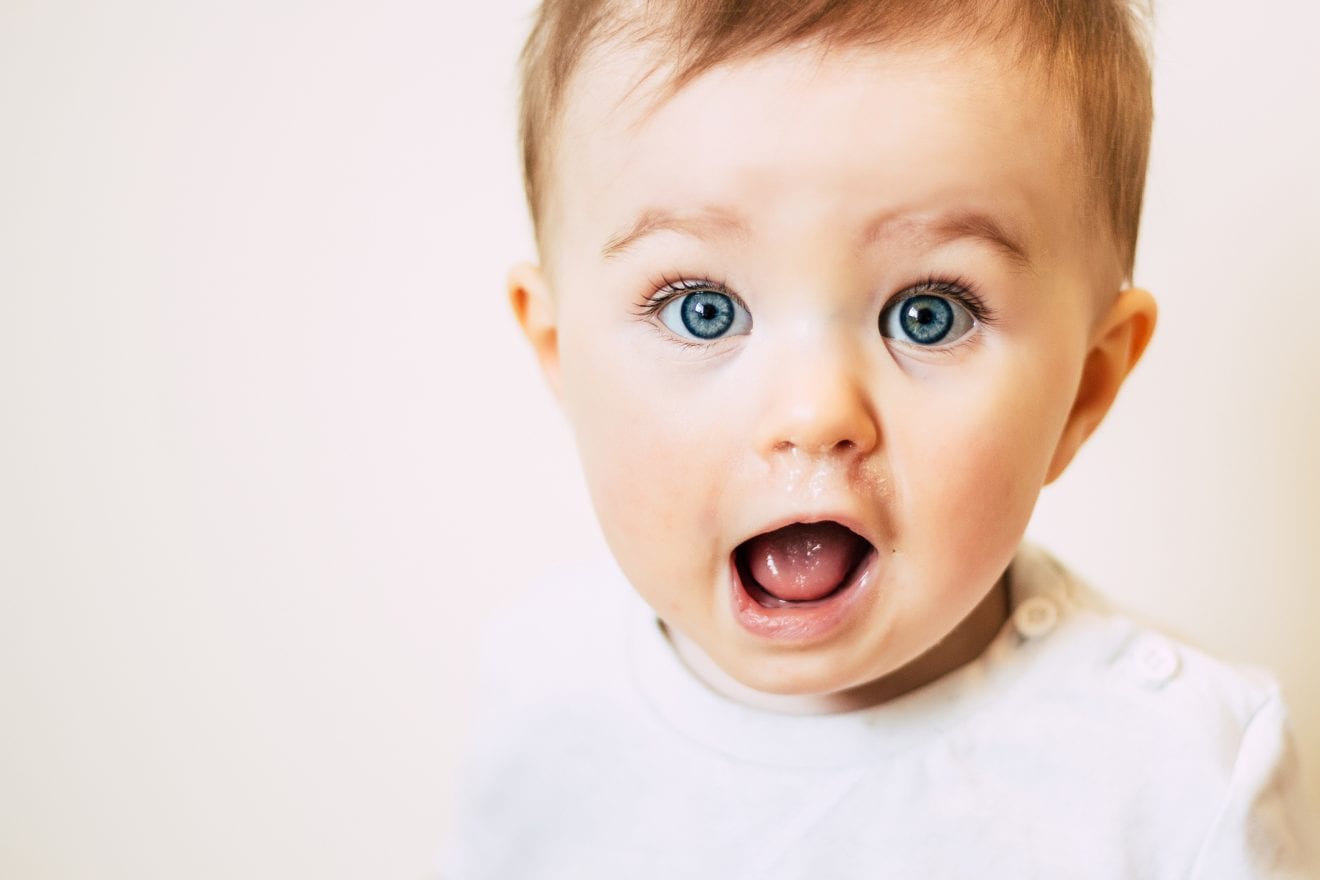Imagining what your baby will look like can be so fun! Will they resemble you or your partner? Or maybe their grandparents? While some traits can be hard to predict, genetics strongly influence baby eye color. You may be able to predict your little one’s eye color with relative accuracy based on the color of your and your partner’s eyes and each of your parents’ eyes.1 Here, we’ll discuss what determines a baby’s eye color, if and whether their eyes change color, and how to estimate their eye color (with charts). Finally, you’ll learn how to keep your baby’s eyes safe, regardless of their hue!
What Determines a Baby’s Eye Color?
The color of your baby’s eyes depends on how much pigment is in the iris, which genetics mostly determines.2 Let’s explore eye pigment and the genes that make up a baby’s eye color:
Melanin
The iris is the colored part of the eye that surrounds a small, black pupil. Baby eye color is a product of the amount of pigment in the iris of the eye.3 Eye color pigment is called melanin. Darker, brown irises have more melanin than lighter, blue irises.2 Eye color is a full spectrum from light blue to almost black. But eyes are usually classified as one of four colors: blue, green, hazel, or brown.3
Genetics
Genetics determine how much melanin a body produces, how it’s transported, and where it’s stored.3 Multiple genes play a role in eye color determination, and many of them are also involved in hair and skin color. Since this involves more than one single gene, eye color doesn’t follow a simple dominant or recessive inheritance pattern. Contrary to popular eye color genetics belief, it’s possible (though rare) for two blue-eyed parents to have a brown-eyed baby.3
Are All Babies Born With Blue Eyes?
Many babies are born with blue eyes because their melanin pigmentation that makes eyes darker has yet to fully develop.1 Melanin production can change over time, which sometimes causes a change in iris color from birth.2 However, it’s a myth that all babies are born with blue eyes — many babies come out with brown eyes that stay brown.2
When Do Babies’ Eyes Change Color?
If it’s possible for their eye color to change over time, when do babies get their eye color? Melanin production can take up to a year to reach completion after your baby is born. Therefore, if your baby is going to experience an eye color change, it’s most likely to happen by 6 months to 1 year of age.4 Sometimes, it can take even longer to notice an eye color change. In one study, 10-20% of children experienced a change in eye color between 3 months and 6 years of age. 10-15% of Caucasian individuals within the change group experienced eye color change up until adulthood.5
What Color Eyes Will My Baby Have?
While baby eye color isn’t as straightforward as researchers once believed, we can still predict it pretty accurately based on the eye colors of each biological parent (and sometimes going back to the grandparents).4 Dark eyes are a dominant trait, meaning that, most of the time, if a baby inherits any one gene for brown eyes, their eyes will be brown.1 However, sometimes a brown-eyed parent can still have and pass on a blue-eyed trait. It might be masked in that parent’s eyes, but if one of their parents (the baby’s grandparents) has blue eyes, it’s still possible for the baby to have blue eyes.6
In general, two parents with blue or green eyes are very likely to have babies with blue or green eyes. Two parents with brown eyes usually have brown-eyed babies, but they can have blue-eyed babies, too, depending on the genes they inherited from their parents. Children with one blue-eyed and one brown-eyed parent can have blue- or brown-eyed babies, depending on if there are any blue-eyed family members of the brown-eyed parent.4
Eye Color Charts
You can use a Punnett square to predict eye color. This is a simplified model, as many different, complex genes control eye color. We all inherit one copy of each gene from each parent. So remember, even a brown-eyed person might have a hidden blue-eyed gene to pass on since brown is dominant over blue.1 A genotype reports both copies of a gene, regardless of what you can see.7
A Punnett square places one parent’s genotype at the top of the square and one parent’s to the left. A capital “B” represents a dominant gene (brown), and a lowercase “b” represents a recessive gene (blue). A brown-eyed parent’s genotype can either be “BB” or “Bb.” A blue-eyed parent is always “bb.”7 While a Punnett square reports a 100% chance that two blue-eyed parents will have blue-eyed children, it’s possible, though rare, for them to have a brown-eyed baby. This is because of the complex genetics that determine eye color and the concentration of melanin in the eyes.1
The eye color charts below aren’t 100% accurate because, again, more than one gene helps determine eye color. But these Punnett squares can serve as a baby eye color calculator to make a prediction based on the colors of the baby’s parents and grandparents:6
Two Blue-Eyed Parents

One Blue-Eyed and One Brown-Eyed Parent

Two Brown-Eyed Parents

And here’s a full chart that breaks down the percentages.

Keeping Your Baby’s Eyes Safe
Eye color is thought to have evolved based on latitude. At higher latitudes with less sun exposure, lighter eyes with less melanin are able to absorb more vitamin D. At lower latitudes with more sun exposure, darker eyes have protection against too much UV damage.2
Regardless of your baby’s eye color, protecting your baby’s eyes from the sun is important to prevent eye problems later in life.8 Some easy interventions to keep your baby’s eyes safe include:8
- Putting on sunglasses with 100% UV protection
- Having baby wear a wide-brimmed hat
- Keeping baby in the shade, especially in the summer between 10 a.m. and 4 p.m.
- Installing mesh sunshades in the car
Frequently Asked Questions (FAQ) About Baby Eye Color
Whether your baby’s eyes are blue, brown, green, or somewhere in between, you’re sure to love staring into them looking back at you. Take a good look because their eye color today may change, and no one will ever have the exact same eye color as your baby!1 While genetics can help predict the color of their eyes, only time will tell. Focus on protecting their eyes and soaking in their gaze, and watch them grow into their unique look before your very eyes.


